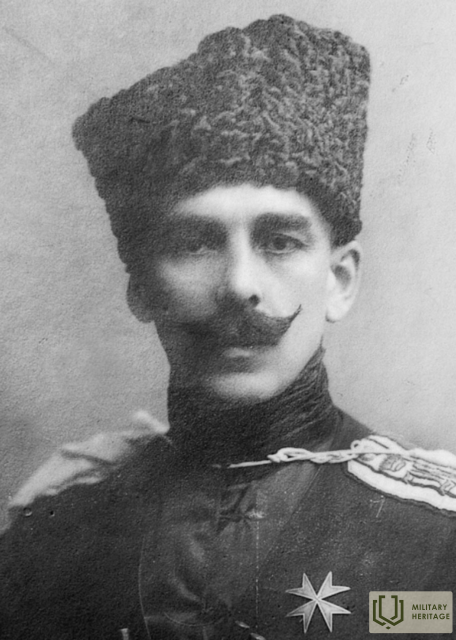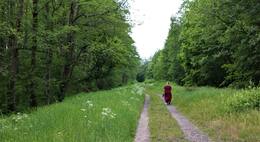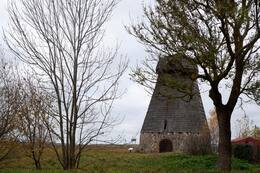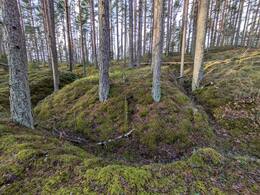Pavelas Bermontas-Avalovas
I WW1, I Nepriklausomybės karai
Provokiškos Vakarų savanorių armijos vadas ir vienas iš suformuotų būrių. 1919 m. rudenį dalyvavo nesėkmingame kare prieš Latvijos, Lietuvos ir Estijos armijas vadinamojoje Bermontiadoje.
1919 m. rugpjūčio 26 d. Bermontas dalyvavo Rygoje vykusiame Latvijos, Lietuvos, Estijos, Lenkijos, antibolševikinio Šiaurės vakarų fronto ir Antantės atstovų susitikime, kuriame siekta koordinuoti karinius veiksmus prieš bolševikinę Rusiją.
1919 m. rugsėjo 5 d. jis pasiskelbė Vakarų Rusijos savanorių armijos vyriausiuoju vadu ir atsisakė prisijungti prie Judeničiaus puolimo prieš Petrogradą, nes manė (arba buvo priverstas taip manyti dėl Vokietijos finansinių sąlygų), kad būtina išlaikyti Rusijos kariuomenės buvimą Baltijos šalyse.
Latvijos Respublikos ginkluota kova su Vakarų savanorių armija (VSA) 1919 m. spalio 8 d. – gruodžio 3 d. Latvijos Nepriklausomybės karo (1918–1920 m.) rėmuose. Vakarų savanorių armija buvo nugalėta ir gruodžio mėnesį paliko Latvijos teritoriją, kartu su P. Bermontu evakuodamasi į Vokietiją.
Po Vakarų Rusijos armijos pralaimėjimo emigravo į Vokietiją, kur įsitraukė į Rusijos nacionalsocialistų judėjimą, buvo vienas iš Rusijos nacionalsocialistų organizacijos lyderių ir kartu su vokiečių naciais dalyvavo represijose prieš Vokietijos komunistus.
Daugiau informacijos šaltinių
Bermontiada – Nacionalinė enciklopedija (enciklopedija.lv)
Pavelas Bermontas - Nacionalinė enciklopedija (enciklopedija.lv)
Bermontiada plačiai atsispindi Latvijos mene, literatūroje ir kine. Žymiausi kūriniai: romanas „Dvēseļu putenis“ (Aleksandrs Grīns, 1934), poema „Ant Daugumalos“ (Uldis Bērziņš, 1999) ir kt.; paveikslai „Iš Bermonto laikų“ (Jānis Roberts Tilbergs, 1923), „Bermonto puolimas Rygoje 1919 m. dėl Libeko tilto“ (Fricis Zandbergs, 1939), „Bermonto išvarymas iš Pārdaugavos“ (Jānis Lauva, 1936), piešinių ciklas „BerSmontisunds,bergsberg“ 1926); vaidybiniai filmai „Lāčplēsis“ (režisierius Aleksandrs Rusteiķis, 1930), „Rīgas sargi“ (rež. Aigars Grauba, 2007), dokumentinis filmas „Bermontiāda“ (rež. Askolds Saulītis, 2009) ir kt.
Susijusios vietos
Laisvės takas (Karostos maršrutas)
Gerai prižiūrimas 9 km ilgio pėsčiųjų takas, sukurtas Latvijos vyrų drąsai ir didvyriškumui atminti 1919 m. Latvijos laisvės kovos metu.
Takas prasideda Redanoje ir driekiasi per Karostos miškų teritoriją, pajūriu ir Cietokšnios kanalu, aplankant caro laikų įtvirtinimus ir sovietmečio karinį paveldą. Take yra 5 informaciniai stendai, kuriuose supažindinama su Karostos ir visą miestą juosiančios įtvirtinimų sistemos sukūrimu, 1919 m. Liepojos Laisvės mūšiais, vėlesniais metais pastatytais kariniais statiniais ir gyvenimu Karostoje sovietmečiu.
1918 m. lapkričio 18 d. buvo paskelbta nepriklausoma Latvijos Respublika, tačiau naujai įkurtos Latvijos valstybės teritorijoje vis dar buvo dislokuoti keli užsienio kariai.
1919 m. lapkritį įvykęs Liepojos mūšis suvaidino svarbų vaidmenį atgaunant Latvijos laisvę, kai karių didvyriškumo dėka priešas buvo pralaimėtas beveik 5 kartus. Po lemiamų mūšių Liepojoje Bermontas buvo išvarytas iš Latvijos.
Radviliškio vėjo malūnas
Aštuoniakampio formos 4 aukštų medinis malūnas stovi šalia Radviliškio miesto pakraštyje, esančiame Vaidulių kaime.
Radviliškio vėjo malūnas buvo pastatytas XIX a. pabaigoje, 1984-1985 m. – restauruotas. Pasakojama, kad 1919 m. lapkričio 22 d. prie malūno įvyko garsusis Lietuvos savanorių kariuomenės mūšis su bermontininkais – provokiškos orientacijos rusų kariniu daliniu. Bermontininkams užėmus Radviliškį – svarbų geležinkelio mazgą, buvo iškilęs pavojus Lietuvos nepriklausomybei. Atkovoti Radviliškį patikėta 2-ajam Algirdo pulkui, vadovaujamam pulkininko leitenanto V. Grigaliūno-Glovackio.
Mūšyje žuvo apie 30 Lietuvos karių, tačiau kautynės baigėsi lietuvių pergale. Pasak kautynėse dalyvavusių savanorių, pulti bermontininkų užimto malūno išėjo visa kuopa, šautuvu ginkluotas vadas visą laiką puolė pirmas, jo pavyzdžiu sekė ir kiti, tad malūnas buvo paimtas, o kitą vakarą pavyko perimti ir Radviliškį.
Minint 70-ąsias mūšio prieš bermontininkus metines, 1989 m. prie malūno buvo pastatytas koplytstulpis ir pasodinta 70 ąžuolų. Ąžuolynas buvo papildytas 2019 m., minint 100-ąjį mūšio jubiliejų.
Nors yra versijų, kad pats mūšis galėjo vykti kiek atokiau, prie kito malūno, tačiau būtent Radviliškio malūnas tapo mūšio simboliu. Prie Radviliškio vėjo malūno ne viena kartą vyko mūšio istorinės rekonstrukcijos, 2010 ir 2014 m. mūšį atkūrė karo istorijos klubų rekonstruktoriai iš Lietuvos, Estijos, Latvijos bei Lenkijos.
Nordeķi – Kalnciemo kopagūbris
Maždaug 30 km ilgio kopų ketera, kurią gamtoje galima atsekti nuo Iļģuciemo (su nedideliais pertraukimais) iki Tyrelių, yra vienas įspūdingiausių Pajūrio žemumų reljefo formų, kuris retai suvokiamas kaip vientisas natūralus darinys. Kopa susidarė vieno iš paskutiniųjų Baltijos ledyninių ežerų pakrantėje, slūgstant Baltijos ledyninio ežero vandeniui. Kopų keterą sudaro dvi lygiagrečios 50–100 m pločio kopų juostos. Jos paprastai būna 6–10 m aukščio, tačiau aukščiausi jų taškai siekia 16–19 m virš jūros lygio. Kleistų, Imantos ir Beberbekių apylinkėse kopas dengiantys gražūs pušynai yra populiari pasivaikščiojimų, poilsio ir sporto, o žiemą – slidinėjimo vieta. Kopos dalis Lačupytė apylinkėse siejama su Bermontiadų įvykiais. Ant kopos Pārdaugavoje yra Lačupės arba Lacarų kapinės . Tarp Pinkių ir Babytės įkurtas Beberbekių gamtos parkas kopoms išsaugoti. Vakarinė Nordekių-Kalnciemo kopų keteros dalis, maždaug 10 km ilgio, vadinama Ilgąja kopa . Netoli Ilgosios kopos (į pietus nuo Trenčių) yra Antinių brolių kapinės , Latvijos šaulių ligoninės vaistų sandėlis ir atnaujinti Latvijos šaulių žeminės . Į pietus nuo Ilgosios kopos yra pelkėtų miškų ir pelkių masyvas, įskaitant Ravėjų ir Maztīrelį . Priešais Maztīrelį yra Ložmetējkalnas su apžvalgos bokštu ir poilsio vieta bei vadinamąja vokiečių pylimo atkarpa . Dar toliau į vakarus, netoli Ilgosios kopos, yra Latvijos šaulių brolių kapinės ir Pikių brolių kapinės. Su didesniais ar mažesniais pertraukimais, beveik per visą Nordekių-Kalnciemo kopų keterą matomi apkasai. Pietvakarinėje Ilgosios kopos dalyje – iš pietų prie jos besiribojančiuose pelkėtuose miškuose matomi Pirmojo pasaulinio karo bombų krateriai . Visu Ilgosios kopos ilgiu (į pietus nuo jos) driekiasi nedideli miško takeliai, tinkami pasivaikščiojimams ir ilgesniems žygiams – puiki proga apžiūrėti Pirmojo pasaulinio karo mūšių vietas.
Atminimo akmuo Lāčplėsio karo ordino kavalieriui Artūrui Köleriui
Atminimo akmuo atidengtas 2009 m. lapkričio 21 d., minint 90-ąsias Jelgavos išvadavimo metines. Atminimo akmuo skirtas Lačplėšio karo ordino kavalieriui kapitonui (vėliau pulkininkui leitenantui) Artūrui Kēlerui, kuris vadovavo Latvijos armijos daliniams, puolusiems miestą iš Kalnciemo pusės per Jelgavos išvadavimo operaciją.
1919 m., kai Ryga jau buvo išlaisvinta iš bermontininkų, lapkričio 21 d., prie Jelgavos apylinkių vyko įnirtingi mūšiai su priešo daliniais.
Lačplėšio karo ordino įteikimo įsakyme nurodoma, kad 1919 m. lapkričio 20 d. netoli Jelgavos Kēlersas, „asmeniškai vadovaudamas 6 kuopų kovinei grupei, intensyviai priešo ugniai užėmęs Ciemalės-Dūminių-Sabrakių-Vilkubūdos liniją, paėmęs belaisvius ir gavęs 6 kulkosvaidžius; kitą dieną, atkakliai puldamas, užėmė Raudonąją užeigą ir Meidži dvarą, galutinai palauždamas priešo pasipriešinimą ir labai prisidėdamas prie Jelgavos išvadavimo“.
Susijusi istorija
Apdovanojimo skyrimo šarvuoto traukinio vadui A. Klestrovui priežastys
Sėkmingai atremdamas priešo ataką, ginkluoto traukinio vadas A. Klestrovas žuvo, o pulkininkas Dankeris išdavė apdovanojimo pagrindą.
Vilio Narkevičiaus kovinės veiklos 1919 m. lapkričio 6 d. aprašymas
Būrio vado, leitenanto Juliaus Rosenthalio Vilio Narkevičiaus, kovinės veiklos aprašymas, 1921 m. lapkričio 3 d.










